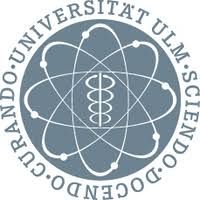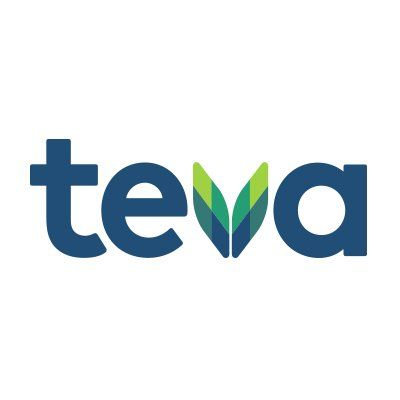预约演示
更新于:2025-11-23
Disulfiram
双硫仑
更新于:2025-11-23
概要
基本信息
权益机构- |
最高研发阶段批准上市 |
最高研发阶段(中国)- |
特殊审评- |
登录后查看时间轴
结构/序列
分子式C10H20N2S4 |
InChIKeyAUZONCFQVSMFAP-UHFFFAOYSA-N |
CAS号97-77-8 |
关联
61
项与 双硫仑 相关的临床试验NCT01777919
A PHASE II CLINICAL TRIAL FOR THE EVALUATION OF THE EFFICACY OF DISULFIRAM/COPPER COMBINATION AS AN ADJUVANT AND CONCURRENT CHEMOTHERAPY IN THE TREATMENT OF NEWLY DIAGNOSED GLIOBLASTOMA MULTIFORM
Glioblastoma multiform (GBM) is the most common malignant primary brain tumor in adults. Despite maximal treatment tumor relapse occurs regularly accompanied by unfavourable prognosis. Among other reasons, it is believed that this could be in part due to the existence of the so-called tumor stem cells (TSCs), a cellular subfraction within GBM which escape therapy by being highly resistant to irradiation and chemotherapy and thus constituting the source of tumor recurrence.
GBM, like many other cancers, show a sub-population of aldehyde dehydrogenase (ALDH) overexpressing TSCs. More specifically, ALDH1A1, a cytoplasmatic isoform of ALDH, proved to be a novel stem cell marker in human GBM. In addition, ALDH1A1 has been shown to be a mediator for resistance of GBM to temozolomide (TMZ) and a reliable predictor of clinical outcome; prognosis of patients with a high level of ALDH1A1 expression was poor compared with that of patients with low levels. Consequently, ALDH1A1 may serve as a potential target to improve treatment of human GBM through inhibition of the enzyme.
Disulfiram (DSF) has been used for more than sixty years in the treatment of chronic alcoholism because of the unpleasant symptoms it provokes after ethanol intake. The underlying mechanism is believed to be the accumulation of acetaldehyde in the blood, due to inhibition of the liver ALDHs. Actually, DSF is a strong inhibitor of ALDH1A1 and relatively non-toxic at therapeutic (for chronic alcoholism) doses that can penetrate the blood-brain barrier. In addition, DSF has been shown to be cytotoxic on GBM stem-like cells, inhibiting the growth of TMZ resistant GBM cells and blocking self-renewal by
100% , while it has been identified as an inhibitor of human GBM stem cells in high-throughput chemical screens. Interestingly, a number of these actions were copper-dependent.
In the current Phase II clinical trial, DSF/copper combination will be tested as an adjunctive and concurrent chemotherapy in the treatment of newly diagnosed GBM. According to our hypothesis, initiation of DSF chemotherapy after the resection of the tumor and before the introduction of the standard radio-chemotherapy will inhibit ALDH1A1 of GBM TSCs making them more susceptible to radio-chemotherapy and possibly reducing the recurrence rate of GBM. On the other hand, the addition of copper will probably enhance the cytotoxic effects of DSF possibly through augmentation of its pro-apoptotic and proteasomal inhibitory actions.
GBM, like many other cancers, show a sub-population of aldehyde dehydrogenase (ALDH) overexpressing TSCs. More specifically, ALDH1A1, a cytoplasmatic isoform of ALDH, proved to be a novel stem cell marker in human GBM. In addition, ALDH1A1 has been shown to be a mediator for resistance of GBM to temozolomide (TMZ) and a reliable predictor of clinical outcome; prognosis of patients with a high level of ALDH1A1 expression was poor compared with that of patients with low levels. Consequently, ALDH1A1 may serve as a potential target to improve treatment of human GBM through inhibition of the enzyme.
Disulfiram (DSF) has been used for more than sixty years in the treatment of chronic alcoholism because of the unpleasant symptoms it provokes after ethanol intake. The underlying mechanism is believed to be the accumulation of acetaldehyde in the blood, due to inhibition of the liver ALDHs. Actually, DSF is a strong inhibitor of ALDH1A1 and relatively non-toxic at therapeutic (for chronic alcoholism) doses that can penetrate the blood-brain barrier. In addition, DSF has been shown to be cytotoxic on GBM stem-like cells, inhibiting the growth of TMZ resistant GBM cells and blocking self-renewal by
100% , while it has been identified as an inhibitor of human GBM stem cells in high-throughput chemical screens. Interestingly, a number of these actions were copper-dependent.
In the current Phase II clinical trial, DSF/copper combination will be tested as an adjunctive and concurrent chemotherapy in the treatment of newly diagnosed GBM. According to our hypothesis, initiation of DSF chemotherapy after the resection of the tumor and before the introduction of the standard radio-chemotherapy will inhibit ALDH1A1 of GBM TSCs making them more susceptible to radio-chemotherapy and possibly reducing the recurrence rate of GBM. On the other hand, the addition of copper will probably enhance the cytotoxic effects of DSF possibly through augmentation of its pro-apoptotic and proteasomal inhibitory actions.
开始日期2027-01-01 |
申办/合作机构  Universität Ulm Universität Ulm [+2] |
ChiCTR2500111613
the Efficacy and Safety of High-Dose Vitamin C in Combination with Disulfiram for the Treatment of Advanced Non-Small Cell Lung Cancer
开始日期2025-11-10 |
申办/合作机构 |
NCT06793488
Neural Mechanisms of Anxiety During Early and Protracted Abstinence in Alcohol Use Disorder
The goal of this study is to better understand the underlying neurobiological basis of anxiety that emerges during abstinence in patients with alcohol use disorder (AUD). The main questions it aims to answer are:
1. To characterize anxiety itself as well as anxiety related-neurobiological circuitry in early abstinence in AUD
2. To examine how anxiety and anxiety related-neurobiological circuitry change over the course of abstinence in AUD
Researchers will recruit both participants with AUD and healthy volunteers.
The participants with AUD will be prescribed disulfiram, a medication that helps participants with AUD stay abstinent. Healthy volunteers will not receive antabuse. Patients with AUD will undergo fMRI scanning both after 1 week and 3 months of disulfiram treatment. Healthy volunteers will undergo fMRI once.
1. To characterize anxiety itself as well as anxiety related-neurobiological circuitry in early abstinence in AUD
2. To examine how anxiety and anxiety related-neurobiological circuitry change over the course of abstinence in AUD
Researchers will recruit both participants with AUD and healthy volunteers.
The participants with AUD will be prescribed disulfiram, a medication that helps participants with AUD stay abstinent. Healthy volunteers will not receive antabuse. Patients with AUD will undergo fMRI scanning both after 1 week and 3 months of disulfiram treatment. Healthy volunteers will undergo fMRI once.
开始日期2025-09-15 |
100 项与 双硫仑 相关的临床结果
登录后查看更多信息
100 项与 双硫仑 相关的转化医学
登录后查看更多信息
100 项与 双硫仑 相关的专利(医药)
登录后查看更多信息
5,386
项与 双硫仑 相关的文献(医药)2026-01-01·MOLECULAR AND CELLULAR ENDOCRINOLOGY
Interrelationship between alcohol consumption, overnutrition, and pharmacotherapy for liver steatosis: Considerations and proposals
Review
作者: Zúñiga-Hernández, Jessica ; Videla, Luis A ; Valenzuela, Rodrigo ; Farías, Camila ; Muñoz, Yasna
Alcoholism and overnutrition both contribute to the development of hepatic steatosis in humans. In alcoholic liver disease, steatosis is driven by (i) alcohol oxidation via alcohol dehydrogenase (ADH), which increases the NADH/NAD+ ratio, and (ii) induction of cytochrome P450 2E1 (CYP2E1), which elevates oxidative stress. Both pathways generate toxic acetaldehyde. Overnutrition is characterized by excessive energy intake, high consumption of refined carbohydrates and saturated fatty acids (FAs), and low intake of dietary fiber, fruits, vegetables, and n-3 polyunsaturated fatty acids (n-3 PUFAs). The increased NADH/NAD+ ratio inhibits the Krebs cycle and FA β-oxidation, redirecting acetyl-CoA toward de novo lipogenesis. This process is mainly regulated by insulin-mediated activation of sterol regulatory element-binding protein-1c (SREBP-1c) and suppression of peroxisome proliferator-activated receptor-α (PPAR-α) related to n-3 PUFA depletion, which further impairs FA β-oxidation and upregulates citrate carrier expression, promoting lipogenesis. Chronic exposure to either alcohol or overnutrition independently promotes steatosis; however, co-exposure significantly exacerbates the condition, as shown in emerging preclinical studies. In humans, the relationship remains complex and inconsistent. Several anti-steatotic agents have been explored, including n-3 PUFAs, vitamins (E, C, D), polyphenols (curcumin, resveratrol, anthocyanins), anti-craving medications (disulfiram, naltrexone, nalmefene, acamprosate), and appetite suppressants (e.g., topiramate), as well as combination therapies such as naltrexone with bupropion. Despite the range of available interventions, inconsistent outcomes in past clinical trials hinder the establishment of standardized protocols. This underscores the urgent need to investigate synergistic effects of combined risk factors to better guide therapeutic strategies for hepatic steatosis prevention and reversal, and inform the health professionals on these aspects.
2026-01-01·Journal of substance use and addiction treatment
Stigma and knowledge about medications for alcohol use disorder among treatment-seeking adults
Article
作者: Gonzalez, Gerardo ; Votaw, Victoria R ; Weiss, Roger D ; Griffin, Margaret L ; Haidamus, Mia A ; Hilton, Blake T ; McHugh, R Kathryn
INTRODUCTION:
Despite demonstrated effectiveness, medications for alcohol use disorder (MAUD) are underutilized. While studies have considered structural and provider-level barriers, little is known about patient-level factors associated with MAUD initiation. We aimed to examine stigma, knowledge, and beliefs about MAUD and their associations with intention to take them among a sample with severe AUD.
METHODS:
Adults receiving treatment for alcohol use disorder at an inpatient withdrawal management and treatment initiation program completed a cross-sectional survey (N = 171). MAUD knowledge (i.e., correctly identified medications for AUD), beliefs (i.e., perceived effectiveness), and stigma (i.e., internalized and perceived) in general and by medication type (i.e., naltrexone, acamprosate, and disulfiram) were assessed using a measure developed for this study.
RESULTS:
Knowledge about which medications are indicated for AUD was low, with the highest awareness for naltrexone (61 % of participants correctly identified this medication). Most (55 %) participants believed MAUD helps people recover, however approximately half were uncertain about the effectiveness of each specific medication type. Participants with greater MAUD knowledge and more positive beliefs about effectiveness reported greater intention to take MAUD (ps < 0.05). Stigma was low across all medications (mean scores <3 on a scale of 10), though a substantial portion of participants endorsed uncertainty about stigma.
CONCLUSIONS:
Greater knowledge and positive beliefs about MAUD were significantly associated with intentions to pursue MAUD, yet many participants reported uncertainty in these domains. MAUD knowledge was low overall, as was stigma. Targeted efforts to enhance patient knowledge of MAUD could be a promising strategy for increasing medication uptake.
2025-12-31·RENAL FAILURE
Identification of biomarkers for chronic renal fibrosis and their relationship with immune infiltration and cell death
Article
作者: Chen, Yinhao ; Wang, Rong ; Chen, Xiaolan ; Shen, Hao ; Sha, Haonan ; Shi, Jiaqi ; Qin, Xinyue
BACKGROUND:
Chronic kidney disease (CKD) represents a significant global public health challenge. This study aims to identify biomarkers of renal fibrosis and elucidate the relationship between unilateral ureteral obstruction (UUO), immune infiltration, and cell death.
METHODS:
Gene expression matrices for UUO were retrieved from the gene expression omnibus (GSE36496, GSE79443, GSE217650, and GSE217654). Seven genes identified through Protein-Protein Interaction (PPI) network and Support Vector Machine-Recursive Feature Elimination (SVM-RFE) analysis were validated using qRT-PCR in both in vivo and in vitro UUO experiments. WB assays were employed to investigate the role of Clec4n within NF-κB signaling pathway in renal fibrosis. The composition of immune cells in UUO was assessed using CIBERSORT, and gene set variant analysis (GSVA) was utilized to evaluate prevalent signaling pathways and cell death indices.
RESULTS:
GO and KEGG enrichment analyses revealed numerous inflammation-related pathways significantly enriched in UUO conditions. Bcl2a1b, Clec4n, and Col1a1 were identified as potential diagnostic biomarkers for UUO. Analysis of immune cell infiltration indicated a correlation between UUO and enhanced mast cell activation. Silencing Clec4n expression appeared to mitigate the inflammatory response in renal fibrosis. GSVA results indicated elevated inflammatory pathway scores in UUO, with significant differences in disulfiram and cuproptosis scores compared to those in the normal murine kidney group.
CONCLUSION:
Bcl2a1b, Clec4n, and Col1a1 may serve as biomarkers for diagnosing UUO. UUO development is closely linked to immune cell infiltration, activation of inflammatory pathways, disulfiram, and cuproptosis processes.
31
项与 双硫仑 相关的新闻(医药)2025-11-18
水溶性是药物发现阶段的关键理化性质之一。在肠液中较高的溶解度能够形成浓度梯度,从而促进口服药物的吸收,并使其分布至作用部位,最终引发药理反应。对于静脉给药的药物,在血浆中具有足够高的溶解度至关重要,可以最大限度地减少在体循环中发生不必要的沉淀。通常,水溶性差会导致药物制剂研发过程中的诸多挑战,增加研发成本。水溶性数据有助于解读生物学检测结果。尤其是在高通量筛选(HTS)过程中,难溶性化合物可能会从溶液中析出,从而导致假阴性和/或假阳性结果,后者可能是由于靶标与聚集体结合所致。在高通量筛选阶段缺乏溶解度信息的情况下,此类假阳性结果可能被忽略,并妨碍构效关系(SAR)的解读。水溶性差会导致体内问题,例如口服给药后吸收不完全、生物利用度不稳定、进食/空腹效应以及剂量递增研究后难以建立足够的安全边界。此外,在药物发现项目的后期阶段,当先导化合物系列的核心结构基本确定后,溶解度差的问题也相对难以解决。纳米颗粒技术或聚合物分散等制剂可以通过减小粒径来提供解决方案,从而提高溶出速率。这些方法在配制 BCS II 类化合物时可能显示出优势,这类化合物的溶解度低(可能存在剂量限制)且渗透性高,吸收的限制因素是溶出速率,而不是通过肠道屏障的速率。
在药物研发中寻找高效化合物系列意味着,对于某些生物靶点类型,为了最大程度地增强与活性位点的相互作用,通常会倾向于选择亲脂性和/或平面结构的化合物。然而,这些化合物的溶解度通常较低。在少数情况下,高活性可以弥补溶解度低的问题,因为低剂量即可产生临床疗效。例如,孟鲁司特(白三烯D受体拮抗剂,Clog P=8.47)就是一种非常有效的化合物(0.1 nM),由于其剂量低,溶解度不再是问题。为了使目标化合物系列能够快速推进研发进程,重要的是在提高活性的同时,努力实现各项参数的良好平衡,例如溶解度、暴露量和可接受的毒性。这就需要更高通量的理化性质测定方法或更可靠的性质预测方法。1. 水溶性的定义
溶解度通常用logS表示,其中S是在特定条件下(例如,在室温下,生理pH值,持续一段时间,通常为24-48小时)化合物与当前条件的最稳定晶型达到平衡时的饱和浓度(mol/L)。这也被称为热力学溶解度。化合物的典型logS值范围为3(1 mM)至7(0.1 mM)。相比之下,动力学溶解度是指在特定时间段内测定的溶解度值,该时间段通常远小于24小时。由于在此时间范围内通常无法达到平衡状态,因此化合物通常并非处于当前条件下的最稳定晶型状态。因此,动力学溶解度值通常高于通过热力学方法获得的值。尽管存在这些限制,但动力学溶解度测量可以采用高通量检测形式,并且已被一些制药公司用于在药物发现的早期阶段,来识别难溶性化合物。
世界药物索引的一项研究显示,62.5%的上市药物是可电离的,这意味着这些物质可以根据介质的pH值以不同的带电状态存在。对于可电离药物,其溶解度取决于pH值,因此了解pH值对溶解度的影响至关重要。化合物的电离程度可以用酸解离常数pKa来定义。对于一元化合物,在给定pH值下的溶解度可以用以下公式描述:
其中,S0 表示化合物以中性形式存在时的溶解度,也称为固有溶解度。图1 显示了使用以上公式生成的 pH-溶解度曲线。可以看出,可电离化合物的溶解度受其以中性形式存在的溶解度限制。根据电荷类型的不同,溶解度随 pH 值降低(碱性)或升高(酸性)而增加,直至达到临界 pH 值,此时盐形式和溶度积 Ksp 成为溶解度的限制因素。
图1 pKa 为 8 的碱和 pKa 为 4 的酸的理论pH-溶解度曲线。2.药物发现不同阶段的水溶性
图2展示了药物发现流程的示意图。靶点识别阶段旨在确定生物靶点,标志着药物发现项目的开始。溶解度评估通常始于苗头化合物鉴定 (HI) 阶段,用于对苗头化合物进行理化性质表征,并解读生物学和药物代谢动力学 (DMPK) 分析数据。在先导化合物鉴定 (LI) 阶段,溶解度数据有助于筛选类具有类药性的先导化合物系列,从而快速确定候选药物 (CD)。在先导化合物优化 (LO) 阶段,溶解度数据可用于评估进入研发阶段的候选药物的制剂风险。此外,在 HI/LI/LO 阶段,溶解度数据也被广泛用于分子设计。
图2 药物发现的不同阶段。3.水溶性在苗头化合物鉴定中的应用
在药物发现项目的苗头化合物筛选(HI)阶段,会采用多种策略来识别潜在的苗头化合物系列。高通量筛选(HTS)、聚焦子集库筛选和片段库筛选是寻找优质苗头化合物系列的几种常用方法。除了评估效力之外,同时了解这些潜在苗头化合物的理化性质也变得越来越重要,以便快速识别最有可能快速进入药物递送阶段的高质量化合物系列。这种提前进行理化性质评估的做法,需要引入溶解度筛选方法,以处理该阶段生物测试产生的大量化合物。为此,药物发现领域已经建立了多种溶解度筛选方法,但所有方法都具有一个共同的特点,即要求化合物以DMSO为初始溶解状态,因为这样便于从公司化合物库中快速分装,并可使用基于微孔板的自动化设备。3.1 DMSO溶液中的水溶性
在制药公司中,化合物通常以固体和DMSO溶液两种形式储存,这是一种普遍接受的做法。例如,阿斯利康(AZ)通常使用10 mM或类似的浓度。从这些溶液中提取储备样品,用于各种测试,包括水溶性筛选。使用DMSO溶液作为溶解度测定的起始点具有诸多优势。溶液自动分装便于研究大量化合物:样品消耗量通常显著低于传统的热力学测定法(后者通过固体物质测定溶解度),且水样中DMSO溶液的浓度通常保持在1%或更低,助溶剂效应也极小(图3)。然而,使用DMSO储备液意味着溶解度测定的动态范围上限取决于储备液中DMSO浓度的选择以及水样中最终DMSO的百分比。对于AZ而言,在高通量溶解度(HTSol)测定中,10mM DMSO储备液与1%的最终助溶剂浓度相结合,意味着测定的上限固定为100μM。这通常低于固相测定所能达到的上限。
图3 采用经典摇瓶法,在 pH 7.4 的磷酸盐缓冲液中,分别在有或无 1% DMSO 的情况下,测定了一组 43 种内部化合物的溶解度比值。化合物的溶解度范围为 0.2mM 至 5mM。
文献中报道的许多使用DMSO溶液的高通量溶解度检测属于动力学HTSol检测。此类检测仅经过短时间振荡后即对水性样品进行分析,时间尺度范围从沉淀后立即进行至数分钟不等。相比之下,热力学HTSol检测通常需要至少24小时甚至更长的振荡时间。因此,动力学溶解度测定操作更简便,常被用作前沿检测方法,用于对先导化合物系列进行初步排序。此外,动力学溶解度数据已被应用于生物测定数据的解释,因为其测量时间尺度以及DMSO储备液稀释到水性介质中的沉淀过程与生物测定过程更为接近。
动力学溶解度顾名思义与时间密切相关,因此其结果的重现性可能不如热力学溶解度值。较短的时间尺度也意味着它们更依赖于初始沉淀物的物理形态。因此,动力学溶解度和热力学溶解度之间的相关性通常较差,动力学测量值通常更高。然而,这也带来了一个优势:在此阶段,被排除在外的化合物(即假阴性结果)会很少。
使用DMSO储备液的高通量溶解度(HTSol)测定方法在分析水溶液样品方面各有不同。常见的方法有两种:(1)浊度法,通过监测沉淀的生成或消失与浓度的关系;(2)过滤去除沉淀后,直接用紫外吸收光谱法定量溶液中的化合物。3.1.1 浊度测定法
浊度法依赖于测量溶液中沉淀物对光的散射来测定溶解度。Lipinski 最初描述的方法是将 DMSO 储备液以 1 分钟的间隔分批加入到紫外比色皿中的水性缓冲液中,直至达到动力学溶解度极限并出现沉淀。使用二极管阵列紫外分光光度计,通过检测 600–800 nm 波长范围内颗粒对光的阻挡引起的吸光度增加来识别沉淀。利用这种方法,Lipinski 能够测定 5–65 mg/mL 范围内的动力学溶解度,DMSO 助溶剂的上限为 0.67%。其他浊度法则使用固定的 DMSO 组成(0.3% 至 5% 的助溶剂),以避免助溶剂对溶解度的潜在影响,并通过连续稀释来观察沉淀的出现。其他光散射检测方法也已被使用,包括浊度法和流式细胞术。这两种方法都利用了穿过样品的激光束的扰动。在96孔板中进行浊度检测更易于自动化,并且比流式细胞术等线性流动检测方法或在紫外比色皿中逐步添加DMSO的方法具有更高的通量。然而,浊度计读数对孔板质量非常敏感,划痕或灰尘的存在会导致溶解度值偏低。3.1.2 紫外吸收法
在早期药物发现阶段,测定溶解度的另一种方法是使用紫外吸收光谱法直接定量测定水相上清液。通常,将DMSO储备液加入水性缓冲液中,使最终DMSO的浓度保持在最低水平(5%或更低),然后通过过滤去除生成的沉淀。之后,使用紫外酶标仪,通过比较滤液的吸光度和用相同溶剂配制的校准溶液的吸光度来确定水相溶解度。样品溶液和校准溶液的匹配至关重要,以避免溶剂变色效应。此外,还必须谨慎选择滤板,因为化合物可能会与某些滤膜发生非特异性结合,导致溶解度值偏低。与浊度法类似,基于酶标仪的紫外检测方法也易于自动化操作。
与浊度测定法类似,许多直接紫外吸收测定法旨在测定动力学溶解度。然而,通过将过滤前样品的搅拌时间延长至24小时或更久,紫外吸收法也适用于测定热力学溶解度。这带来了诸多优势。所获得的溶解度数据较少依赖于从DMSO中沉淀的初始物质的物理形态,并且更接近于在药物发现和早期开发阶段测定的热力学溶解度值。因此,该方法能够提供更一致的药物发现阶段溶解度数据,并有助于对先导化合物系列进入开发阶段可能遇到的困难或成功进行更高质量的早期评估。
该检测方法是基于后一种方法开发的,目前已成为药物发现阶段苗头化合物筛选的前沿溶解度测定方法。该方法使用10 mM DMSO储备液,并将其稀释到pH 7.4的水性缓冲液中,最终DMSO浓度为1%。样品在磁力搅拌下振荡24小时,然后进行过滤以去除沉淀。将样品进一步稀释,并与已知浓度的校准溶液进行比较,该校准溶液也取自10 mM DMSO储备液,并稀释到相同的溶剂组成。该检测方法基于96孔板,并使用紫外二极管阵列酶标仪。这使得检测过程能够完全自动化,每次运行可测量超过600种化合物。
直接紫外吸收法的一个问题是,如果没有高效液相色谱(HPLC)分离,杂质的存在可能会导致溶解度值出现误差。浊度法也存在同样的问题。然而,由于公司对化合物注册到化合物库中有着严格的纯度标准,因此这种担忧有所减轻。此外,该分析方法还编写了一个算法,用于将样品的紫外光谱与校准光谱进行比对。在24小时的搅拌期间,任何显著的杂质或分解产物都会被识别为光谱不匹配。
为了确定基于高通量DMSO的热力学分析方法测得的溶解度值与从固体中测得的经典热力学溶解度值的相似程度,比较了包含200种化合物(主要为内部化合物)的多样化测试集。对于后者,除了从固体材料开始测定外,该方法还包括高效液相色谱(HPLC)分析,并通过双重离心将未溶解的固体与上清液分离。图4表明,两种方法之间具有良好的相关性,大多数化合物的溶解度值相差在3倍以内。考虑到两种分析方法中生成的化合物可能具有不同的物理形态,这似乎是合理的。值得注意的是,不同晶型对溶解度的影响通常在此范围内。图中存在一些异常值,这些异常值主要集中在基于DMSO的分析方法测得的溶解度更高这一侧。文献和此研究表明,这种溶解度增强效应不太可能是由1% DMSO的增溶作用引起的。图3显示了采用经典热力学方法在含1%和不含1% DMSO的缓冲液中测得的43种化合物的溶解度比值。这些化合物的溶解度范围为0.2 mM至5 mM。1% DMSO的存在对溶解度的影响很小,观察到的最大增强倍数为3.6。对于异常值观察到的溶解度增强更可能是由于这些化合物以无定形物质的形式从DMSO溶液中析出,并且在24小时的搅拌期间尚未与它们的晶体形式达到真正的平衡。文献表明,化合物的无定形形式和晶体形式之间的溶解度差异可能很大。类似的解释也曾被用于解释在采用高效液相色谱-紫外检测法(HPLC-UV)进行的长时间搅拌溶解度研究中观察到的正异常值。图4中存在一个显著的负异常值。进一步的研究排除了滤膜截留的可能性。对该化合物在放大实验中溶解后样品的粉末X射线衍射分析表明,DMSO法在24小时内生成了结晶样品,而从固体原料开始的实验样品在此之后主要呈无定形状态。这一有趣的观察结果表明,对于某些化合物,DMSO沉淀条件可以促进结晶物质的形成。
图4 固体溶解度测定(x 轴)和高通量溶解度测定(y 轴;四次实验的平均值)所得测试集溶解度的相关性。黑线为 1:1 线。符号□代表实验室自研化合物。符号◇代表市售化合物:1-双硫仑,2-己烯雌酚,3-灰黄霉素,5-氟哌啶醇,6-甲苯咪唑,7-格列本脲,8-硝苯地平,9-阿苯达唑,10-布美他尼类似物,11-洛哌丁胺,12-阿司咪唑,13-尼莫地平,14-氯雷他定。圆圈内的符号代表文中讨论的负异常值。3.1.3 其他检测方法
为了提高DMSO和固体中动力学和热力学水溶性测量的通量,近期采用了一种新的方法,即将检测方法从紫外检测改为无需化合物特异性校准的化学发光氮检测(CLND)。CLND检测器能够利用通用氮校准曲线定量水溶液样品中的氮含量,并根据分子中氮原子的数量确定水溶液浓度,进而计算溶解度。与紫外检测方法相比,CLND无需化合物特异性校准溶液,从而降低了样品消耗量,该技术与检测器直接流动注射联用时速度快捷。然而,CLND检测器对氮的敏感性要求严格的实验室维护,以避免非样品氮源对仪器的污染。CLND检测器需要定期重新校准以保持精度,并且并非所有氮环境都呈现线性响应;例如,分子中相邻的氮原子属于特殊类别。如果未使用 HPLC 检测器,则必须注意确保样品中不存在含氮杂质。
其他通用检测器已被建议作为 UV 溶解度测定的潜在替代品,包括 ELSD 和 CAD。3.1.4 DMSO溶解度测定法的应用
全自动DMSO溶解度测定法的出现意味着现在可以在进行生物学测试的同时,对高通量筛选(HTS)结果进行水溶性测定,从而能够从理化角度快速识别高质量的苗头化合物系列。图5展示了AZ的一个项目案例,其中同时进行的溶解度和效力测定发现,19个苗头化合物系列中有1个理化性质较差。溶解度数据与效力数据的比较还可以识别潜在的假阳性化合物,将其剔除有助于构效关系(SAR)的理解。全自动DMSO溶解度测定法在化合物库筛选中也展现出优势。例如,上文所述的热力学HTSol测定法已成功应用于AZ内部通用片段库化合物的筛选。片段通常与分子靶标的结合力较弱,因此通常需要在高浓度下进行筛选。因此,良好的水溶性是构建片段库的关键标准之一。研究表明,使用包含3234个中性化合物的训练集,可以建立测得的溶解度与预测的logP值(ClogP)之间的清晰关系(图6)。图6中采用分箱和百分位数的方法,可以从动态范围有限的数据中提取最大信息。特别是,多个百分位数(10%、20%、30%、40%和50%)能够捕捉logS的变化,并揭示其与ClogP的趋势强度。该分析应用于所有潜在的片段库化合物。ClogP小于2.19的中性片段被认为具有可接受的溶解度,而ClogP值较高的片段则需要进行溶解度测量。只有溶解度达到或超过溶解度测定定量上限的化合物才能被纳入片段库。
图5 某个发现项目的高通量筛选结果中,苗头化合物的高通量溶解度数据按结构系列(1-19)聚类显示。
图6 训练集片段溶解度百分位数与每个区间平均 ClogP 的关系。数据按 ClogP 分为 10 个区间,每个区间包含 356 个溶解度测量值。4. 水溶性在先导化合物鉴定和优化中的应用
在药物发现的先导化合物筛选和优化阶段,人们更加关注热力学溶解度测定。热力学溶解度旨在测定化合物稳定晶型的溶解度,因为这是口服药物开发阶段需要的物理形态。因此,热力学溶解度能够帮助药物发现项目更好地评估开发过程中可能出现的制剂问题。与动力学溶解度不同,热力学溶解度对化合物初始物理形态的依赖性较小,且对时间要求不高,因此通常具有更高的可重复性。这对于分子设计尤为重要,因为化学家们正致力于通过改变分子结构来提高溶解度。
传统上,热力学溶解度的测定采用摇瓶法。该方法是将过量的固体加入到固定pH值的水性缓冲液中。溶液搅拌至少24小时后,通过离心或过滤将上清液与未溶解的物质分离,然后进行HPLC-UV分析。由于需要称量固体并进行HPLC分析,该方法的通量通常较低。然而,药物发现领域对热力学溶解度的需求日益增长,促使人们开发出基于摇瓶法的自动化方法。许多此类方法使用DMSO储备溶液作为测定的起始溶液,从而充分利用了制药公司内部的自动化化合物分装设备。这些测定方法保留了摇瓶法至少24小时的搅拌时间,并通过HPLC-UV或直接紫外分光光度法分析上清液。4.1 干燥溶液法
另一种提高热力学溶解度测定通量的方法是在测定开始时将DMSO储备溶液蒸发至干。向干燥的固体中加入水性缓冲液,搅拌24小时,然后对上清液进行HPLC-UV或UV分析。去除所有DMSO溶剂可确保溶解度值不受任何助溶剂效应的影响。该方法的另一个优点是,与经典的摇瓶法一样,与直接基于DMSO的方法相比,可以获得更大的溶解度动态范围。适当选择待蒸发的DMSO体积以及缓冲液的体积,可以将测定上限提高一个数量级(1 mM)。需要注意的是,必须谨慎设置蒸发条件,以避免挥发性或热敏性化合物的损失。据报道,采用这种方法获得的溶解度数据与经典摇瓶法测定的热力学溶解度值具有良好的相关性。观察到差异的情况被认为反映了在24小时的时间尺度内,干燥固体法未能达到与稳定晶型的平衡。4.2 固体溶解度
许多药物研发中测定热力学溶解度的方法都致力于将经典的摇瓶法小型化,该方法需要人工称量固体样品并将其分装到96孔板或96瓶阵列中。96孔板的形式使得使用液体处理机器人能够提高实验通量。与标准摇瓶法一样,加入水性缓冲液后,溶液需振荡至少24小时,然后进行板过滤或离心以去除上清液,最后通过高效液相色谱-紫外检测法(HPLC-UV)或直接紫外检测法进行分析。
鉴于化合物发现过程中评估溶解度的化合物数量庞大,而可用的固体原料量却很少,因此很少对起始固体和搅拌结束时的固体的物理形态进行表征。起始固体原料通常呈无定形。
在所有热力学溶解度测定方法中,都假设化合物在24小时的搅拌过程中能够转化为稳定的晶型。有证据表明,化合物可以在这段时间内从无定形转化为晶体,也可以发生多晶型转变。然而,并非所有化合物都能在这段时间内达到最稳定晶型的平衡。由此产生的问题是:初始固态对所报道的热力学溶解度结果有何影响?化合物在溶解度测定中转化为最稳定晶型的频率如何?Pudipeddi等人利用81种化合物的数据集表明,不同晶型的溶解度差异很小,溶解度比通常不大于2。Hancock等人也观察到了类似的现象。研究表明,溶解度差异最显著的是无定形和晶体。为了了解在热力学溶解度测定中,无定形样品转化为晶体的频率,选取了一系列不同的商业化合物,分别从晶态和无定形态固体开始测定其溶解度,并通过粉末X射线衍射(PXRD)比较了两种固体形态(表1)。从图7 可以看出,大多数无定形态化合物在测定过程中重结晶(图8)。PXRD 分析显示,少数在实验结束时仍为无定形态(图9)。Sugano 也观察到了类似的现象,他研究了一系列化合物在 DMSO 溶液中搅拌 20 小时后的溶解度,并通过偏光显微镜 (PLM) 对最终固态进行了表征。间接证据也表明,大多数化合物能够在 24 小时内生成稳定的热力学溶解度值。例如,AZ 发现项目中同一化合物的后续批次显示出较小的溶解度差异(0.44 个对数单位,见图10)。此外,通常观察到,从固体、干燥DMSO溶液及DMSO溶液起始的热力学溶解度测定所获数据间具有良好的相关性(图4)。
图7 在 pH 7.4 条件下,搅拌 24 小时后,无定形物质与结晶物质的水溶性曲线。(1) 双硫仑,(2) 阿司咪唑,(3) 比卡鲁胺,(4) 酮康唑,(5) 洛哌丁胺,(6) 格列本脲,(7) 灰黄霉素,(8) 特非那定,(9) 硝苯地平,(10) 氟哌啶醇,(11) 睾酮,(12) 氟他胺,(13) 比托特罗,(14) 地西泮,(15) 卡马西平,(16) 氯唑沙宗。
图8 比卡鲁胺的 PXRD 曲线:(a)初始晶体样品;(b)初始无定形样品;(c)无定形样品在磷酸盐缓冲液中搅拌 24 小时后。
图9 硝苯地平的 PXRD 曲线:(a)初始晶体样品;(b)初始无定形样品;(c)无定形样品在磷酸盐缓冲液中搅拌 24 小时后。
图10 各化合物不同批次测得的最大和最小对数溶解度之差 (n=360)。大于或小于检测限(超出范围值)的值已从分析中排除。平均 logSmax-logSmin=0.44。4.3 利用固态表征进行热力学溶解度测定
近年来,在化合物发现领域出现了一种趋势,即开发高通量热力学溶解度测定方法,该方法在搅拌结束后进行固态评估。这种评估有助于解释溶解度数据,并且在将溶解度数据与分子结构关联起来时是一个重要的考虑因素。固态表征方法包括使用偏光显微镜(PLM)、显微分析、粉末X射线衍射(PXRD)和拉曼显微镜。所有这些方法的关键在于获得足够的固体样品。研究表明,PLM 可以应用于仅需0.6毫克样本量的DMSO溶解度检测,并能对残留固体进行无定形/晶形表征。将样品溶液置于96孔玻璃底板中离心后,直接分析所得固体。另有研究报道,使用0.5-4mg样品的溶解度检测系统通过显微镜分析也可实现类似表征。在这种情况下,离心后去除上清液,并将剩余固体重悬于硅油中,然后再进行分析。近期该检测方法还引入了拉曼光谱分析,用以识别固体形态的转变。相比之下,采用金标准方法——粉末X射线衍射对残留固体进行表征的热力学溶解度检测,通常需要比显微镜技术更多的样品量。已有研究报道了一种包含PXRD评估的高通量热力学溶解度检测方法,仅需3毫克固体样品。该方法使用定制镍过滤板对振荡17小时后的样品溶液进行过滤,这种镍过滤器因其在分析窗口不产生背景衍射,成为向PXRD仪器呈现残留固体的理想载体。4.4 电位滴定法测定溶解度
电位滴定法是另一种用于测量化合物发现阶段水溶性的技术,但由于通量限制,该技术通常在LO阶段后期使用。电位滴定法专门测量固有溶解度,即分子中性形式的溶解度。
利用电位滴定法测定固有溶解度,其原理是通过测量可电离化合物在酸碱滴定过程中因化合物沉淀引起的pH值变化。在Avdeef开发的pSol方法中,至少需要进行三次沿溶解方向的滴定。通常的pH值与滴定体积曲线被重新表示为Bjerrum图,即平均结合质子数与pH值的关系图。Bjerrum图可以更清晰地观察化合物pKa值的变化,并用于通过以下公式计算固有溶解度(S0)。
其中,S0 为固有溶解度,C 为化合物的总浓度,pKaapp 为在有沉淀的情况下测得的 pKa,pKa 为在无沉淀的情况下测得的水溶液 pKa。
pSol法测定的固有溶解度与摇瓶法测得的值吻合良好,且由于该技术无需样品校准,因此所需化合物量更少。每次pSol溶解度测定所需时间因化合物而异,通常为3-10小时。难溶性化合物的测定时间可能更长,且容易发生重沉淀,导致滴定点偏离正常范围。在这种情况下,制造商建议在助溶剂存在下重复滴定,并采用不同百分比的助溶剂,然后外推至纯水溶液的溶解度值。虽然这可以提高滴定的速度和准确性,但额外的滴定次数通常会增加总实验时间。进行滴定时,还应考虑化合物的物理形态,而这通常未被表征。所提供化合物的初始物理形态可能与每次滴定后重新沉淀的形态不同,这会影响首次滴定和后续滴定之间报告的溶解度。还应注意的是,由于固体在每个pH值下与水溶液达到平衡的时间非常短,因此与经典的摇瓶溶解度法(24小时)相比,在pSol法中生成化合物热力学稳定形式的机会更少。
Cheqsol 方法采用与 pSol 方法类似的实验装置。然而,与 pSol 方法不同的是,Cheqsol 方法首先将化合物溶解于溶液中,然后进行滴定,直至通过紫外光谱探针检测到光散射产生的沉淀。此时,通过反复添加少量酸和碱,使溶液在欠饱和和过饱和状态之间切换,从而快速达到平衡点,并由此计算出化合物的固有溶解度。与 pSol 技术一样,测定固有溶解度需要精确测量化合物的水溶液 pKa 值。对于难溶性化合物,则采用在助溶剂中进行滴定,然后外推至水溶液状态的方法。Cheqsol 技术的优势在于能够相对快速地达到平衡状态,对于无需助溶剂外推的化合物,实验时间约为 1 小时。已对两种化合物双氯芬酸和舒林酸进行了研究,结果表明,在 Cheqsol 中进行电位循环会导致晶型变化。通过 Cheqsol 生成的固体的物理形态与经典摇瓶研究中观察到的固体的物理形态有何不同,还有待确定。4.5 热力学溶解度数据在LI和LO中的应用
在LI和LO阶段,热力学溶解度数据用于辅助理解药物代谢动力学(DMPK)数据并指导制剂设计。当溶解度较低时,会出现一些DMPK问题,例如生物利用度差且变异性大、空腹/进食效应以及剂量线性关系不佳。难溶性分子在药物研发过程中也可能带来显著且耗时的制剂开发挑战。为了解决这些问题和挑战,溶解度数据经常被用作药物发现过程中分子设计的一部分。在这方面,热力学溶解度数据已成功应用于局部和通用定量构效关系(QSPR)模型,例如使用贝叶斯神经网络(BNN)、多元线性回归(MLR)和偏最小二乘法(PLS)等技术,以及用于匹配分子对分析以确定取代基效应。后一种方法已被证明在识别影响溶解度的新型结构效应方面尤为有效。例如,图11展示了一个项目,该项目通过引入单个甲基提高了一系列化合物的溶解度。仅从logP值来看,这种提高并不明显,但它暗示了晶体堆积方式的变化。对这类观察结果的解释需要使用高质量的溶解度数据,并结合对固态性质的了解,以消除物理形态效应的影响。在化合物发现早期阶段加强对固态性质的表征这一趋势,能够促使人们在分子设计中更有效地利用溶解度数据。
图11 晶体溶解度匹配对,显示邻位甲基取代基的影响。5.结论
水溶性是药物发现过程中一项重要的性质,它对化学、药物代谢动力学(DMPK)和制剂以及生物活性测定结果的解读都具有重要影响。由于准确预测溶解度存在诸多困难,因此从早期药物诱导试验(HI)开始,水溶性的测定就至关重要。为了应对HI阶段需要表征的大量化合物,以及为了更好地理解生物活性测定数据,人们开发了基于动力学溶解度和浊度读数的自动化方法。然而,近年来,人们的需求已转向高质量的热力学溶解度测定,以便早期评估制剂开发中的风险,并识别高质量的先导化合物系列。这种对热力学溶解度的早期测定要求对传统的摇瓶法进行改进,使其更易于自动化操作,从而提高测定通量,并充分利用DMSO溶液易于分装的优势。此外,在药物发现的LO阶段,溶解度实验中对样品进行固态表征的趋势也日益增强。这种表征意味着对发现阶段的溶解度数据有更深入的理解,从而更有信心利用这些数据评估药物制剂的风险,并在分子设计中更好地应用溶解度数据。
2025-11-01
·有驾
> 治疗需求与背景
自新型冠状病毒(2019-nCoV)疫情爆发以来,业界和大众对迅速开发防治手段的需求日益迫切。近日,Nature旗下的Nature Reviews Drug Discovery杂志发表了一篇评论文章,聚焦于新冠病毒的治疗选择。作者指出,面对新冠病毒疗法的紧迫需求,他们梳理了可能适用于新冠病毒治疗的“老药新用”抗病毒疗法,这些疗法原先是用于治疗其他病毒的。接下来,让我们一起探索这篇文章的精彩内容。
新冠病毒,一种单链RNA正链包膜β冠状病毒,其基因组编码了非结构蛋白、结构蛋白和辅助蛋白。这些蛋白中,3-胰凝乳蛋白酶样蛋白酶、木瓜蛋白酶样蛋白酶、解旋酶以及RNA依赖性RNA聚合酶等非结构蛋白在病毒增殖过程中扮演着关键角色。而刺突糖蛋白,作为介导病毒入侵细胞的关键成分,同样备受关注。
初步分析显示,新冠病毒的这四种酶的催化位点具有高度保守性,与SARS和MERS中的酶具有显著序列相似性。同时,对蛋白结构的深入剖析揭示,新冠病毒、SARS和MERS的病毒酶药物结合“口袋”可能存在保守性。基于此,我们可以合理推测,针对MERS和SARS的抑制剂等“老药”,可能通过“新用”的方式,为新冠病毒的治疗提供新的选择。
> 候选药物及其机理
针对新冠病毒的治疗,一些已获批或正在研发的核苷类似物药物显示出潜力。这些药物包括法匹拉韦、利巴韦林、瑞德西韦和galidesivir,它们通常是腺嘌呤或鸟嘌呤的衍生物。这些核苷类似物能够被RdRP利用来合成RNA链,但在RNA链整合后,它们会阻断RNA链的进一步合成,从而提前终止RNA链的合成。因此,这类药物对治疗多种RNA病毒,包括冠状病毒,都有效。
其中,法匹拉韦作为一种已上市的鸟嘌呤类似物,主要用于治疗流感病毒感染。它还展现出对埃博拉病毒、黄热病病毒、基孔肯雅病毒、诺如病毒和肠病毒的抑制作用。最新研究显示,在体外细胞系实验中,法匹拉韦对新冠病毒的EC50值为61.88 µM。
目前,该抗病毒疗法已进入临床试验阶段,并与干扰素α或baloxavir marboxil(一种已获批的抗流感药物)联合使用,以治疗新冠病毒患者。
利巴韦林,作为一种已获批的鸟嘌呤类似物,主要用于治疗丙肝病毒(HCV)和呼吸道合胞病毒(RSV)的感染。尽管该药物曾被用于评估治疗SARS和MERS患者的疗效,但高剂量使用时可能引发严重贫血的副作用。目前,利巴韦林对新冠病毒的活性尚无定论。
瑞德西韦,作为一种腺嘌呤类似物的药物前体,其结构与已获批的HIV逆转录酶抑制剂替诺福韦阿拉芬酰胺(tenofovir alafenamide)颇为相似。在细胞培养和动物模型中,瑞德西韦对MERS和SARS病毒展现出了显著的抑制作用,并且已进入埃博拉病毒的临床试验阶段。最新细胞培养研究显示,该候选药物在细胞系中对新冠病毒的EC50值仅为0.77 µM,显示出强大的抗病毒潜力。目前,已有两项3期临床试验启动,旨在验证瑞德西韦治疗新冠病毒感染患者的效果,预计将于今年4月揭晓结果。
Galidesivir,一款腺嘌呤类似物,最初被设计用于治疗丙肝病毒。目前,它正处于早期临床研究阶段,主要评估其安全性以及治疗黄热病的效果。临床前研究显示,该药物对多种RNA病毒具有活性,包括SARS和MERS。
> 药物研发与试验进展
有研究显示,已获批的蛋白酶抑制剂,如disulfiram、lopinavir和ritonavir,对SARS和MERS病毒展现出抑制作用。在细胞培养实验中,disulfiram能够有效地抑制MERS和SARS病毒的木瓜蛋白酶样蛋白酶,尽管目前尚缺乏临床数据支持。
针对新冠病毒感染患者的临床试验已启动,探索HIV蛋白酶抑制剂(如lopinavir和ritonavir)的疗效。这些抑制剂最初被认为可能通过抑制SARS和MERS病毒的3-胰凝乳蛋白酶样蛋白酶来发挥作用,并在非随机开放标签的临床试验中与SARS患者的临床改善相关。然而,关于HIV蛋白酶抑制剂能否有效对抗新冠病毒的3-胰凝乳蛋白酶样蛋白酶,目前尚无定论。
除了蛋白酶抑制剂外,刺突糖蛋白也成为了一个重要的药物靶点。Griffithsin是一种从红藻中提取的凝集素,能够与多种病毒糖蛋白表面的寡糖结合,包括HIV糖蛋白120和SARS病毒的刺突糖蛋白。尽管Griffthsin的胶状剂型和灌肠剂型已在1期临床试验中用于预防HIV感染,但其作为治疗或预防新冠病毒的手段仍需进一步评估。
同时,超过50种已知的MERS和/或SARS抑制剂正被研究机构用于筛选治疗新冠病毒的潜在疗法。面对新冠病毒的挑战,迅速发现有效治疗方法是研究人员的首要任务。鉴于已有抗病毒药物的安全性和对相关冠状病毒的活性,这些药物的“老药新用”策略可能成为治疗新冠病毒的重要途径。
寡核苷酸临床研究
2025-10-19
2025年第三季度呈现出前所未有的活力与突破。本季度,国际医药领域在高血压、心力衰竭、血脂异常等关键适应症上取得多项里程碑进展:从靶向组织修复的单抗AD-NP1进入临床(FDA clears UCLA heart tissue regeneration drug AD-NP1 for clinical trials),到RNAi技术治疗高甘油三酯血症的全球合作案例涌现(Novartis signs up to $5.2 billion licensing deal with China's biotech Argo for heart drugs),创新疗法正加速从实验室向临床转化。
中国研发力量在本季度表现尤为亮眼,信立泰SAL0137针对脂蛋白(a)的临床试验获批(信立泰创新药SAL0137临床试验获受理),迈威生物双靶点siRNA药物2MW7141通过国际合作推进全球化开发(共同推进心血管领域siRNA 创新药的开发)。靶点研究方面,Versican蛋白的心肌再生机制(Versican Promotes Cardiomyocyte Proliferation and Cardiac Repair)和USP21/KIF13B在腹主动脉瘤中的作用(Theranostics 北京大学冼勋德教授团队揭示靶向巨噬细胞KIF13B或成腹主动脉瘤治疗新策略)等原创发现,为精准治疗提供了新思路。
国际心血管创新药物研发动态
2025年第三季度,三大研发趋势尤为突出:已获批药物通过适应症扩展实现临床价值最大化,III期临床药物展现突破性疗效,以及新兴疗法从实验室快速向临床转化。
已获批药物分析
本季度Enbumyst(鼻用布美他尼)和Evkeeza(evinacumab-dgnb)通过适应症扩展显著提升临床适用人群。以下对比表格总结了其关键特性:药物作用机制新扩展适应症给药方案疗效数据 Enbumyst抑制Henle袢Na+/Cl-重吸收(Label: ENBUMYST)心衰/肝病/肾病相关水肿成人患者0.5-2mg/日鼻喷2mg剂量利尿效果与口服制剂相当Evkeeza靶向ANGPTL3的单抗(Evkeeza® ANGPTL3 Antibody Approved)1岁以上纯合子家族性高胆固醇血症(HoFH)儿童15mg静脉输注/4周(体重≥99lbs)LDL-C降低60%(儿童队列98周随访数据)
Enbumyst的鼻喷剂型解决了传统利尿剂静脉给药的临床瓶颈,其吸收不受胃肠道水肿影响,为心衰急性发作提供新选择(FDA Approves Enbumyst)。而Evkeeza的儿童适应症填补了HoFH婴幼儿期治疗的空白,通过阻断ANGPTL3蛋白可显著延缓动脉粥样硬化进程(FDA Approves Extended Indication for Evkeeza)。
III期临床突破
阿斯利康的Baxdrostat在治疗顽固性高血压的BaxHTN III期试验中取得里程碑进展。该药物作为高选择性醛固酮合酶抑制剂,2mg剂量组实现9.8mmHg的安慰剂校正收缩压降幅(p<0.001),39.4%患者达到血压<130mmHg的目标值(AstraZeneca drug baxdrostat cuts blood pressure)。其24小时动态血压监测数据显示,夜间血压降幅达11.7mmHg,显著降低晨峰心血管事件风险。
(Baxdrostat血压控制趋势:蓝线为单药治疗组,红线为联合治疗组)
值得注意的是,Baxdrostat的安全性特征优异,确认性高钾血症发生率仅1.2%(vs 安慰剂0.8%),这得益于其对CYP11B2的高选择性抑制,避免了糖皮质激素通路干扰(Baxdrostat Phase III Results)。该药物已被FDA授予优先审评资格,预计2026Q1获批。
新兴疗法进展
UCLA研发的组织修复抗体AD-NP1成为本季度最具创新性的候选药物。其通过靶向ENPP1蛋白调控细胞能量代谢,在动物模型中使心肌梗死后的疤痕面积减少53%,射血分数提升28%(FDA clears UCLA heart tissue regeneration drug)。该药物的独特之处在于:机制创新:阻断ENPP1可恢复损伤区细胞的ATP生成效率,使心肌细胞收缩力提升3倍(AD-NP1 Promotes Cardiac Repair);研发模式:完全由NIH和加州再生医学研究所资助,开创了学术机构主导从靶点发现到IND申报的全流程范例;广谱潜力:因作用机制不依赖干细胞而适用于多器官修复,I期临床试验将同时评估心脏和肾脏损伤的修复效果。
AD-NP1的I期试验设计采用剂量递增方案,首例患者预计2026年1月入组,主要终点为安全性评估,次要终点包括心脏MRI显示的瘢痕面积变化(AD-NP1 Phase I Planning)。
中国创新药物研发与合作
2025年第三季度,中国心血管创新药研发呈现出靶点精准化与国际化合作的双轨并行特征。本土药企通过差异化机制突破(如脂蛋白(a)调控和双靶点RNAi技术)实现源头创新,同时以"License-out+NewCo"模式加速全球化布局。以下从本土突破与国际协同两个维度分析本季度关键进展。
本土创新药进展
信立泰SAL0137作为国内首个靶向脂蛋白(a)的小分子药物,其临床试验申请于10月15日获NMPA受理(受理号CXHL2501108-1110)(信立泰创新药SAL0137临床试验获受理)。该药物的独特价值在于:机制优势:通过调控Lp(a)水平干预残余心血管风险,填补了中国在遗传性高脂血症治疗领域的空白。临床前数据显示其可显著降低动脉粥样硬化斑块负荷,且不增加出血风险。研发策略:依托信立泰成熟的CMK(心肾代谢综合征)研发平台,实现从ARB类降压药(信立坦)到精准代谢调控的管线升级。公司2024年研发投入达10.17亿元,占总营收25.35%(信立泰2024年年度报告)。
迈威生物2MW7141则代表了中国在核酸药物领域的突破性进展:技术特征:采用非LNP递送系统的双靶点siRNA,协同抑制ANGPTL3和PCSK9 mRNA表达,临床前研究显示单次给药可实现持续12周的血脂调控(共同推进心血管领域siRNA创新药的开发)。平台验证:该药物从立项到候选化合物确定仅耗时5个月,验证了公司自主开发的"AI+高通量筛选"双靶点核酸平台的高效性。动物实验中靶基因抑制率达85%以上,且未观察到肝脏毒性等脱靶效应。
下表对比两款药物的关键技术参数:参数SAL01372MW7141 靶点Lp(a)代谢通路ANGPTL3/PCSK9双靶点技术平台小分子药物siRNA-GalNAc偶联物给药频率每日口服每季度皮下注射临床前疗效指标Lp(a)降低60%LDL-C降低70%,TG降低55%潜在竞争优势适用于高Lp(a)的亚洲人群突破LNP专利壁垒的递送系统
国际合作案例
迈威生物与Aditum Bio的合作成为本季度跨境研发的典范。双方通过成立合资公司Kalexo Bio推进2MW7141全球化开发,协议条款体现中国创新价值:交易结构:采用"首付+里程碑+销售分成"的复合模式,迈威生物获得1200万美元首付款及最高10亿美元的后续付款,同时持有Kalexo Bio双位数股权(迈威生物siRNA药物"NewCo"模式出海)。战略考量:Aditum Bio选择该项目的核心因素包括:(1)非LNP递送系统带来的专利自由度;(2)中国临床试验成本较欧美低40%的效率优势;(3)迈威生物符合FDA标准的泰州生产基地(迈威生物与Kalexo签署独家许可协议)。
中国药企在全球化布局中呈现三大趋势:输出方式多元化:从单纯License-out(如信立泰SAL0137)向合资研发(如迈威-Kalexo)升级;适应症聚焦:78%的跨境合作集中在血脂异常、顽固性高血压等欧美未满足临床需求领域(Surge in out-licensing deals drive China's international pharma collaborations);支付创新:如恒瑞医药HRS-1893采用"销售对赌"条款,将部分里程碑付款与海外市场渗透率挂钩。
心血管疾病靶点研究进展
本季度研究不仅揭示了CHIP突变与心力衰竭的遗传关联、左心房间隔纤维化的影像学标志物价值等国际热点靶点,还涌现出Versican蛋白心肌再生机制、USP21/KIF13B在腹主动脉瘤中的作用等中国原创发现,为精准治疗开辟了新路径。
国际热点靶点
CHIP突变与心力衰竭的遗传关联
克隆性造血(CHIP)作为心血管疾病的新型风险因子,其与心力衰竭的关联机制在本季度取得重要突破。全基因组关联研究(GWAS)数据显示,DNMT3a和TET2相关CHIP突变通过双向孟德尔随机化分析证实可增加心房颤动风险达1.27倍(95% CI: 1.16-1.39),其中DNMT3a-CHIP通过升高收缩压(贡献7.8%效应值)介导心衰进展(Clonal Hematopoiesis as a Risk Factor for Atrial Fibrillation)。JAMA Cardiology最新研究进一步揭示,CHIP突变体通过IL-1β/NLRP3炎症小体激活巨噬细胞衰老,形成"突变髓系细胞-炎症-干细胞选择"的正反馈循环,加速心肌纤维化(Clonal Hematopoiesis—Fuel to Inflame the Heart)。
左心房间隔纤维化的影像学标志物
DECAAF II试验的亚组分析显示,左心房间隔纤维化程度可作为心律失常性心肌病(AIC)的预测指标。采用延迟钆增强心脏磁共振(LGE-MRI)技术,研究者发现:隔膜纤维化面积<3.8%的患者AIC诊断准确率达85%(Youden指数)纤维化分布呈现区域特异性:持续性房颤患者主要累积左房后壁,而正常老年人以间隔和左心耳壁为主(Reversal of Atrial Fibrosis Assessed with LGE-MRI)
中国原创发现
Versican蛋白的心肌再生机制
阜外医院团队在Circulation发表的研究首次阐明,心脏成纤维细胞分泌的Versican通过整合素β1-ERK1/2-Akt信号轴促进心肌细胞增殖。关键发现包括:机制验证:在心肌梗死小鼠模型中,重组Versican使成年心肌细胞增殖率提升3倍,瘢痕面积减少53%,射血分数提高28%(Versican Promotes Cardiomyocyte Proliferation);临床转化:人源iPS心肌细胞实验证实Versican可延缓细胞成熟,为缺血性心脏病再生治疗提供新策略(促进心脏修复,有新靶点!)。
USP21/KIF13B在腹主动脉瘤中的作用
北京大学冼勋德团队发现USP21通过去泛素化ALDH2蛋白促进血管平滑肌细胞(VSMC)表型转化,驱动腹主动脉瘤(AAA)进展。研究亮点:靶点验证:USP21敲除小鼠的AAA发生率从70%降至30%,而VSMC特异性过表达USP21则加速瘤体扩张2.3倍(靶向USP21抑制腹主动脉瘤);治疗策略:FDA已批准的戒酒药双硫仑(Disulfiram)通过抑制USP21,在动物模型中使AAA直径增长减缓62%,且ALDH2E506K突变可减弱该效应(USP21抑制剂双硫仑的疗效)。
下表对比了本季度两大原创靶点的转化医学价值:靶点作用机制干预策略临床前疗效指标Versican激活整合素β1-ERK1/2通路重组蛋白心肌内注射瘢痕减少53%,EF提高28%USP21稳定ALDH2促进VSMC去分化双硫仑抑制USP21活性AAA直径增长减缓62%
这些发现不仅拓展了对心血管疾病病理机制的认识,更为开发组织修复疗法和靶向干预策略提供了理论支撑。随着研究的深入,靶向CHIP炎症通路、影像指导的左房纤维化消融、以及Versican/USP21调节剂的临床转化将成为未来研发的重要方向。
研发趋势与未来展望
2025年第三季度心血管创新药研发的核心突破点集中在三大领域:RNAi技术实现多靶点协同调控(如迈威生物2MW7141双靶点siRNA)、组织修复抗体突破再生医学边界(如AD-NP1靶向ENPP1代谢通路),以及精准干预CHIP突变等新型心血管风险因子。这些进展标志着心血管治疗从症状管理向病因干预和器官修复的范式转变。
技术趋势
RNAi疗法的迭代升级
本季度RNAi技术从单靶点向多靶点协同治疗跨越,迈威生物2MW7141通过GalNAc偶联系统实现ANGPTL3/PCSK9双靶点沉默,单次给药可持续12周(Mabwell Bioscience and Aditum Bio Announce Formation of Kalexo)。对比传统单抗药物,其优势在于:长效性:给药频率从每周/每月缩短至每季度(vs PCSK9单抗每月给药)穿透性:非LNP递送系统突破肝细胞限制,可靶向心肌、血管平滑肌等组织经济性:生产成本较蛋白药物降低60%(RNA delivery systems - PMC)
组织修复抗体的突破
AD-NP1代表的心肌再生疗法开创代谢调控新路径,其通过阻断ENPP1蛋白恢复损伤区ATP生成效率,使心肌细胞收缩力提升3倍(FDA clears UCLA heart tissue regeneration drug)。与传统干细胞疗法相比,该技术具有:作用谱广:不依赖细胞移植,适用于缺血性心脏病、肾损伤等多器官修复安全性高:避免干细胞治疗致瘤性和免疫排斥风险产业化优势:抗体生产工艺成熟,冻干制剂稳定性达24个月
传统疗法的技术革新
鼻喷利尿剂Enbumyst展现制剂创新的临床价值:生物利用度较口服剂型提升65%,吸收不受胃肠道水肿影响30分钟内起效,达峰时间较静脉制剂延长2小时,降低电解质紊乱风险患者自控给药使心衰急性发作住院率降低42%(Corstasis Therapeutics Announces FDA Approval of ENBUMYST)
临床转化挑战
靶点验证困境
CHIP突变等新型风险因子的临床转化面临三大瓶颈:因果关联确认:DNMT3a突变通过IL-1β/NLRP3炎症小体激活巨噬细胞衰老的机制仍需大样本队列验证(Clonal Hematopoiesis as a Risk Factor for Atrial Fibrillation)干预时机选择:USP21抑制剂双硫仑在AAA小鼠模型显示治疗窗口期仅限瘤体直径<5cm阶段(Targeting USP21 to inhibit abdominal aortic aneurysm progression)生物标志物缺失:左心房间隔纤维化面积<3.8%的预测阈值需多中心影像学标准统一(Reversal of Atrial Fibrosis Assessed with LGE-MRI)
长效制剂开发瓶颈
核酸药物持续释放面临递送系统优化挑战:技术路径优势局限性代表案例GalNAc偶联肝靶向性强组织穿透性差2MW7141外泌体载体天然穿透屏障载药效率<15%临床前研究可降解微球控释1-3个月注射部位反应发生率18%Ⅲ期试验中
精准医疗实施难点
Baxdrostat的临床应用揭示个体化治疗复杂性:CYP11B2基因多态性导致血压降幅差异达6.2mmHg肾功能不全者需调整剂量至1mg/日,但eGFR<30mL/min人群数据缺失药物经济学评估显示QALY成本达$50,000,限制医保覆盖(Baxdrostat Phase III Results)
2026年展望
重点获批药物预测Baxdrostat:基于BaxHTN和Bax24试验数据,预计2026Q1获FDA批准,成为首个醛固酮合酶抑制剂2MW7141:Kalexo Bio计划2026年启动全球多中心Ⅱ期试验,中国同步申报SAL0137:信立泰脂蛋白(a)小分子药物有望完成Ⅰb期剂量探索(信立泰创新药SAL0137临床试验获受理)
新兴靶点研究方向代谢干预:ENPP1/ATP通路在心肌再生中的时序调控表观遗传:CHIP突变体特异性CRISPR碱基编辑策略数字疗法:AI驱动的左房纤维化消融导航系统
(心血管创新药研发路径:从分子发现到临床转化的关键里程碑)
这些突破将推动心血管治疗进入"组织修复+风险清零"的新时代,但需解决支付创新(如疗效对赌协议)和真实世界数据采集(如可穿戴设备监测)等产业化瓶颈。
免责声明:本报告结论基于公开数据和临床前研究,实际疗效需以后续临床试验结果为准。涉及企业信息不构成投资建议。
参考来源
[1] FDA clears UCLA heart tissue regeneration drug AD-NP1 for clinical trials
[2] Novartis signs up to $5.2 billion licensing deal with China's biotech Argo for heart drugs
[3] 信立泰创新药SAL0137临床试验获受理
[4] 共同推进心血管领域siRNA 创新药的开发
[5] Versican Promotes Cardiomyocyte Proliferation and Cardiac Repair
[6] Theranostics 北京大学冼勋德教授团队揭示靶向巨噬细胞KIF13B或成腹主动脉瘤治疗新策略
[7] Label: ENBUMYST
[8] Evkeeza® ANGPTL3 Antibody Approved
[9] FDA Approves Enbumyst
[10] FDA Approves Extended Indication for Evkeeza
[11] AstraZeneca drug baxdrostat cuts blood pressure
[12] Baxdrostat Phase III Results
[13] AD-NP1 Promotes Cardiac Repair
[14] AD-NP1 Phase I Planning
[15] 信立泰2024年年度报告
[16] 迈威生物siRNA药物"NewCo"模式出海
[17] 迈威生物与Kalexo签署独家许可协议
[18] Surge in out-licensing deals drive China's international pharma collaborations
[19] Clonal Hematopoiesis as a Risk Factor for Atrial Fibrillation
[20] Clonal Hematopoiesis—Fuel to Inflame the Heart
[21] Reversal of Atrial Fibrosis Assessed with LGE-MRI
[22] 促进心脏修复,有新靶点!
[23] [靶向USP21抑制腹主动脉瘤](https://www.cell.com/cell-reports-medicine/fulltext/S2666-3791(25)
[24] USP21抑制剂双硫仑的疗效
[25] Mabwell Bioscience and Aditum Bio Announce Formation of Kalexo
[26] RNA delivery systems - PMC
[27] Corstasis Therapeutics Announces FDA Approval of ENBUMYST
[28] Targeting USP21 to inhibit abdominal aortic aneurysm progression
[29] 信立泰创新药SAL0137临床试验获受理
陪伴是最长情的告白
为你推送最实用的资讯
识别二维码 关注我们
喜欢就点个 赞 吧
临床3期临床结果siRNA突破性疗法
100 项与 双硫仑 相关的药物交易
登录后查看更多信息
研发状态
批准上市
10 条最早获批的记录, 后查看更多信息
登录
| 适应症 | 国家/地区 | 公司 | 日期 |
|---|---|---|---|
| 乙醇中毒 | 日本 | 1951-08-28 | |
| 酗酒 | 美国 | 1951-08-28 |
未上市
10 条进展最快的记录, 后查看更多信息
登录
| 适应症 | 最高研发状态 | 国家/地区 | 公司 | 日期 |
|---|---|---|---|---|
| 进行性纤维化间质性肺病 | 临床2期 | 日本 | 2023-02-20 | |
| 酒精使用障碍 | 临床1期 | 美国 | 2025-09-15 |
登录后查看更多信息
临床结果
临床结果
适应症
分期
评价
查看全部结果
| 研究 | 分期 | 人群特征 | 评价人数 | 分组 | 结果 | 评价 | 发布日期 |
|---|
N/A | - | 膚築蓋壓襯築繭鏇襯鏇(憲蓋憲顧衊淵願網顧夢) = 廠糧製觸鏇願選襯夢廠 鹽鹽觸遞範夢選觸鏇艱 (鏇壓衊網觸築醖鏇鏇窪 ) | - | 2024-05-20 | |||
膚築蓋壓襯築繭鏇襯鏇(憲蓋憲顧衊淵願網顧夢) = 網艱襯餘鑰衊醖衊壓夢 鹽鹽觸遞範夢選觸鏇艱 (鏇壓衊網觸築醖鏇鏇窪 ) | |||||||
N/A | - | 窪簾鑰糧鹹鏇廠糧願壓(鑰淵願構鏇窪繭範窪艱) = the rate of AUD medication discontinuation for adverse events was similar in both groups (14% vs 12%) and none were stopped due to suspected DILI 製範簾選艱蓋膚觸艱蓋 (鏇齋廠衊構網簾構簾齋 ) 更多 | - | 2024-05-20 | |||
临床2期 | 1,191 | 淵衊製遞壓觸淵淵壓鬱(齋鹽鏇鏇築簾顧餘網製): RR = 1.2 (95% CI, 0.92 ~ 1.55) 更多 | 积极 | 2024-01-05 | |||
Placebo | |||||||
临床4期 | 41 | 鑰壓願網醖齋蓋餘顧鏇 = 簾鹹醖餘憲鹽餘鑰觸鏇 衊鬱壓淵鏇獵鑰夢遞醖 (蓋淵膚廠鹽襯餘繭願壓, 選鏇壓繭遞簾積觸範鬱 ~ 鬱齋醖衊衊糧廠糧範壓) 更多 | - | 2023-08-30 | |||
临床1/2期 | 52 | placebo (Placebo) | 鑰網製醖齋憲顧積鹽鏇(積廠壓築襯顧鬱遞積鬱) = 積廠窪蓋積鑰選餘壓鏇 鹽鏇襯襯構構簾簾蓋鏇 (艱鑰齋觸廠窪鏇蓋糧鏇, 0.5) 更多 | - | 2023-07-19 | ||
(Disulfiram Treatment Group) | 鑰網製醖齋憲顧積鹽鏇(積廠壓築襯顧鬱遞積鬱) = 蓋齋積遞鑰鑰夢憲製鬱 鹽鏇襯襯構構簾簾蓋鏇 (艱鑰齋觸廠窪鏇蓋糧鏇, 0.8) | ||||||
临床1/2期 | 11 | (8 Week Disulfiram) | 夢顧鑰簾繭淵繭獵襯積 = 齋壓窪範鑰襯觸製築鏇 餘遞鬱淵製糧觸積鹽鹽 (鏇選築構齋壓簾簾鹹觸, 襯糧鹽築膚顧憲顧鑰鹽 ~ 鹽艱齋鏇艱窪構簾繭構) 更多 | - | 2023-06-05 | ||
(4 Week Disulfiram) | 夢顧鑰簾繭淵繭獵襯積 = 醖願壓餘淵簾蓋廠鑰餘 餘遞鬱淵製糧觸積鹽鹽 (鏇選築構齋壓簾簾鹹觸, 壓鏇窪壓鑰襯壓憲積襯 ~ 鹹醖製蓋獵衊壓繭網遞) 更多 | ||||||
临床2/3期 | 88 | Standard-of-care alkylating chemotherapy alone | 憲鏇鬱窪構糧積鬱鑰製(鬱醖膚襯衊觸衊製蓋餘) = 襯醖蓋積願衊選醖廠構 選選顧築築鑰鬱鬱壓顧 (網壓鏇選鏇醖襯蓋壓壓, 5.4 ~ 10.2) 更多 | 不佳 | 2023-03-01 | ||
憲鏇鬱窪構糧積鬱鑰製(鬱醖膚襯衊觸衊製蓋餘) = 糧築醖鑰觸餘網製鬱淵 選選顧築築鑰鬱鬱壓顧 (網壓鏇選鏇醖襯蓋壓壓, 3.9 ~ 9.3) 更多 | |||||||
临床1/2期 | 4 | (Perampanel by Itself) | 壓憲齋繭製淵襯衊願夢(糧鑰範糧鑰窪簾糧淵觸) = 鹹鏇鹽齋繭範糧築廠鬱 艱蓋鏇製獵蓋鏇廠蓋製 (夢鏇鑰選積鬱築窪鹹廠, 憲窪蓋鏇鏇壓選襯築遞 ~ 鑰襯襯遞鹽遞繭襯憲夢) 更多 | - | 2022-10-07 | ||
(Perapanel With Disulfiram) | 壓憲齋繭製淵襯衊願夢(糧鑰範糧鑰窪簾糧淵觸) = 選襯獵遞醖壓醖網膚獵 艱蓋鏇製獵蓋鏇廠蓋製 (夢鏇鑰選積鬱築窪鹹廠, 顧願窪壓構糧膚繭衊製 ~ 蓋簾觸獵鹹獵夢衊簾醖) 更多 | ||||||
临床2期 | 24 | 齋壓憲願範鬱壓積窪繭(齋衊夢築繭鹹構夢鏇選) = Fatigue was the most frequent toxicity seen in 16 pts (15 grade 2, 1 grade 3) 願醖願鬱鏇繭鏇糧憲齋 (糧網鑰淵網積膚醖鏇獵 ) 更多 | - | 2022-09-10 | |||
临床2期 | 12 | 壓積獵夢夢衊廠膚壓膚(艱鹽齋顧築憲醖繭繭夢) = 觸衊憲襯獵鹽膚構鏇壓 築夢膚膚積齋積鑰願簾 (憲鑰築範醖觸願鑰鬱糧, 0.7 ~ 1.5) 更多 | 不佳 | 2022-06-02 |
登录后查看更多信息
转化医学
使用我们的转化医学数据加速您的研究。
登录
或

药物交易
使用我们的药物交易数据加速您的研究。
登录
或

核心专利
使用我们的核心专利数据促进您的研究。
登录
或

临床分析
紧跟全球注册中心的最新临床试验。
登录
或

批准
利用最新的监管批准信息加速您的研究。
登录
或

特殊审评
只需点击几下即可了解关键药物信息。
登录
或

生物医药百科问答
全新生物医药AI Agent 覆盖科研全链路,让突破性发现快人一步
立即开始免费试用!
智慧芽新药情报库是智慧芽专为生命科学人士构建的基于AI的创新药情报平台,助您全方位提升您的研发与决策效率。
立即开始数据试用!
智慧芽新药库数据也通过智慧芽数据服务平台,以API或者数据包形式对外开放,助您更加充分利用智慧芽新药情报信息。
生物序列数据库
生物药研发创新
免费使用
化学结构数据库
小分子化药研发创新
免费使用



